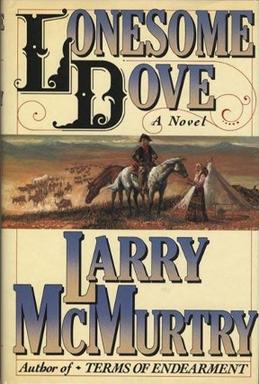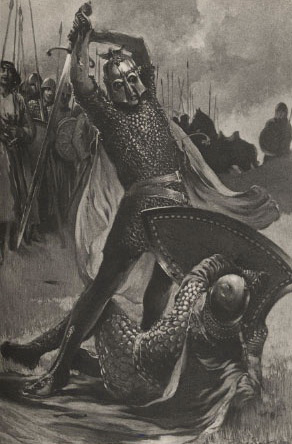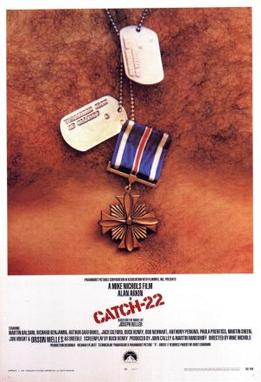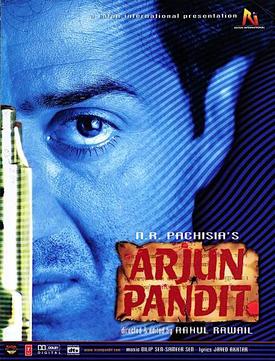Edward J. Nately III is a fictional character in Joseph Heller's satirical 1961 novel Catch-22 .
Edward J. Nately III is a fictional character in Joseph Heller's satirical 1961 novel Catch-22 .
Nately starts off the book as a 19-year-old Lieutenant, who will be "twenty next January" and who came from a very rich and respected family. (In a flashback his mother reminds him that—in contrast to such vulgar upstarts as the Astors, "whose family, I believe, still lets rooms," and the "vulgar tugboat captain" Vanderbilt—"You are a Nately, and the Natelys have never done anything for their money.") His family originally enlisted him to serve in the Air Corps, believing the war would be over by the time he finished his training and that he would mingle with "gentlemen". Therefore, Nately could gain the pride of enlisting without actually having to fight. Instead, he mingled with Yossarian and Dunbar, and was sent overseas. He lives in a tent with McWatt next to Havermeyer's tent.
His most notable contribution to the book is his involvement with a whore, who is for the most part uninterested in him until he gives her some time to sleep. He is often filled with American optimism, shown by his desire to marry his whore and send her kid sister to a respected U.S. college. He is killed on a mission when Dobbs accidentally flies his plane into Nately's while attempting to evade flak. Nately's whore blames Yossarian and spends the rest of the book trying to murder him with various objects such as a potato peeler.
A chapter later deleted from Catch-22 entitled 'Love, Dad' gives Nately's full name as Edward J. Nately III.
Art Garfunkel portrayed Nately in the 1970 film adaptation of the novel directed by Mike Nichols. In the film, Nately dies in the bombing of the base by Milo Minderbinder. In the 2019 miniseries, he is portrayed by Austin Stowell.
Nately's whore is portrayed as a very tired prostitute who has no interest in sex, and would rather sleep. She is constantly hounded by her younger sister. Therefore, Lieutenant Nately, who is madly in love with her, cannot persuade her to engage in a meaningful relationship with him. She engages him sexually, but it is cold and mechanical, for she refuses to spend any time with Nately without pay. Captain Black would frequently sleep with her to annoy Nately.
However, when she finally does get some rest, she falls as madly in love with Nately as he did for her. Shortly after, Nately dies on a combat mission. When Yossarian arrives in Rome to deliver the bad news to her, Nately's whore blames Yossarian for Nately's death. She subsequently dedicates herself to pursuing Yossarian, and ambushes him several times throughout the remainder of the novel in an attempt to exact revenge for Nately's death by stabbing him. She finally succeeds in stabbing him in the side, sending him to the hospital. Another one of her attacks is the last, albeit minor, comical event in the book.
Nately's Whore's Kid Sister is another character in Catch-22 .
Her real name is never mentioned, and Heller only refers to her in terms of her relationship with her sister, even though she is specifically mentioned more than once.
In the plot of the story, she constantly interrupts Nately and his whore while they are having sex as the little girl wants to become a prostitute like her sister. Towards the end of the novel, Yossarian tries to save her after she and all of the prostitutes have been thrown out of their apartment by Military Police. Her whereabouts after this are unknown. At the end of the novel, Yossarian vows to find her and take her with him to Sweden.

Catch-22 is a satirical war novel by American author Joseph Heller. He began writing it in 1953; the novel was first published in 1961. Often cited as one of the most significant novels of the twentieth century, it uses a distinctive non-chronological third-person omniscient narration, describing events from the points of view of different characters. The separate storylines are out of sequence so the timeline develops along with the plot.

Lonesome Dove is a 1985 Western novel by American writer Larry McMurtry. It is the first published book of the Lonesome Dove series and the third installment in the series chronologically. It was a bestseller and won the 1986 Pulitzer Prize for Fiction. In 1989, it was adapted as a TV miniseries starring Tommy Lee Jones and Robert Duvall, which won both critical and popular acclaim. McMurtry went on to write a sequel, Streets of Laredo (1993), and two prequels, Dead Man's Walk (1995) and Comanche Moon (1997), all of which were also adapted as TV series.
Capt. John Yossarian is a fictional character, the protagonist of Joseph Heller's satirical 1961 novel Catch-22 and its 1994 sequel Closing Time. In Catch-22, Yossarian is a 28-year-old captain in the 256th Squadron of the Army Air Forces where he serves as a B-25 bombardier stationed on the small island of Pianosa off the Italian mainland during World War II. Yossarian's exploits have previously been thought to be based on the experiences of the author. Heller was also a bombardier in the Army Air Corps, stationed on an island off the coast of Italy during the war. Heller later documented in his autobiography "Now & Then" the elements of Yossarian which came from his experiences. Heller noted that he derived the name Yossarian from a wartime friend and fellow bombardier, Francis Yohannan. Yohannan made the military his career, continuing to serve through the Vietnam War, placing him at odds with Yossarian's feelings towards the military and as noted in his obituary "(Yohannan) turned aside calls from reporters who asked if he was the real-life Yossarian." A possible source for Yossarian's narrative adventure and efforts to be relieved of his combat duties is Lt. Julius Fish, another bombardier and wartime friend to both Francis Yohannan and Joseph Heller.
First Lieutenant Milo Minderbinder is a fictional character in Joseph Heller's 1961 novel, Catch-22. As the mess officer of Yossarian's squadron, Minderbinder is an entrepreneur during World War II, "perhaps the best known of all fictional businessmen" in American literature. The Minderbinder character is a "bittersweet parody" of the American dream, both a "prophet of profit" and the "embodiment of evil". Minderbinder also appears in Heller's 1994 sequel Closing Time.
Them is a novel by Joyce Carol Oates, the third in the Wonderland Quartet she inaugurated with A Garden of Earthly Delights (1967). It was published by Vanguard in 1969 and it won the U.S. National Book Award for Fiction in 1970.
Doc Daneeka is a fictional character in the 1961 novel Catch-22 by Joseph Heller. Doc Daneeka is the squadron physician and a friend of the novel's protagonist, Yossarian. "Catch-22" itself is first explained in the novel when Yossarian asks Doc Daneeka to excuse him from combat duty. Doc Daneeka is also the title of Chapter 4 of the novel.
Orr is a fictional character in the classic 1961 novel Catch-22 by Joseph Heller. Orr is a World War II bomber pilot who shares a tent with his good friend, the protagonist of the novel, Yossarian. Described as "a warm-hearted, simple-minded gnome," Orr is generally considered crazy. His most notable feature is repeatedly being shot down over water, but, until his final flight, always managing to survive along with his entire crew. On his final flight, perhaps two-thirds of the way through the novel, he is again shot down into the Mediterranean, and is lost at sea. Only in the last ten pages of the novel does Heller reveal that Orr's crashes were part of an elaborate plot to escape the war.
Chaplain Captain Albert Taylor Tappman is a fictional character in Joseph Heller's 1961 novel Catch-22 and its 1994 sequel Closing Time. In earlier editions he was called Chaplain Robert Oliver Shipman, but this was changed to Albert Taylor Tappman. Editions published in some other territories, notably Britain, have continued to use the original name. Heller named the character after Charles Allan Tapman, a Penn State University boxer and Class of 1938 graduate that Heller met socially in the early 1950s.
Colonel Cathcart is a character in Joseph Heller's novel Catch-22 (1961) and the novel's de facto main antagonist.
Captain "Aarfy" Aardvark is a fictional character, a major antagonist in the 1961 novel Catch-22 by Joseph Heller. Aarfy is the plump navigator in Yossarian's B-25, noted for being oblivious to incoming flak, getting lost on missions, and his omnipresent pipe. His nickname "Aarfy" is an abbreviation of his surname, Aardvark.

A catch-22 is a paradoxical situation from which an individual cannot escape because of contradictory rules or limitations. The term was coined by Joseph Heller, who used it in his 1961 novel Catch-22.

Accolon is a character in Arthurian legends where he is a lover of Morgan le Fay who is killed by King Arthur in a duel during the plot involving the sword Excalibur. He appears in Arthurian prose romances since the Post-Vulgate Cycle, including as Accalon in the French original Huth Merlin and Acalón in the Spanish adaptation El Baladro del Sabe Merlin.

Closing Time is a 1994 novel by Joseph Heller, written as a sequel to his popular 1961 novel Catch-22. It takes place in New York City in the 1990s and revisits some characters of the original, including Yossarian, Milo Minderbinder, and Chaplain Tappman.

Catch-22 is a 1970 American satirical black comedy war film adapted from the 1961 novel of the same name by Joseph Heller. In creating a black comedy revolving around the "lunatic characters" of Heller's satirical anti-war novel set at a fictional Mediterranean base during World War II, director Mike Nichols and screenwriter Buck Henry worked on the film script for two years, converting Heller's complex novel to the medium of film.
Scheisskopf is a minor fictional character in the 1961 novel Catch-22 by Joseph Heller, who is promoted through the ranks from Lieutenant to First Lieutenant, Colonel and finally to Lieutenant General. Lieutenant Scheisskopf is the title of Chapter Eight and General Scheisskopf is the title of Chapter Thirty-seven. Scheisskopf is a parade-obsessed ROTC graduate and training officer at the Air cadet base where Yossarian and Clevinger are trained before being sent overseas. Later Scheisskopf is himself transferred overseas to General Peckem’s command.

Vanessa Marigold Abrams is a fictional character in the Gossip Girl novel series. She is portrayed by Jessica Szohr in the television adaptation. Vanessa was introduced on the first season as a recurring character, but became a series regular after a successful run due to the popularity of her character. She left the series at the end of the fourth season.
Clarissa is a 1991 British period drama television miniseries starring Sean Bean, Saskia Wickham and Lynsey Baxter. It aired on BBC2 in three episodes between 27 November and 11 December 1991. Based on the 1748 novel Clarissa by Samuel Richardson, it follows a virtuous young woman who is oppressed by her ambitious family and a rake who becomes obsessed with her. It was nominated for a BAFTA TV Award for Best Drama Serial.

Arjun Pandit is a 1999 Indian Hindi-language action crime film directed by Rahul Rawail and produced by N. R. Pachisia. It stars Sunny Deol and Juhi Chawla. The film is a remake of the 1995 Kannada-language film Om and was the thirteenth highest-grossing film of 1999. The film is also remembered for its song Kudiyan Shehar Diyan, sung by Daler Mehndi and performed by Juhi Chawla. Upon release, the film was a box office success, grossing ₹20 crore against a production budget of ₹9.5 billion.